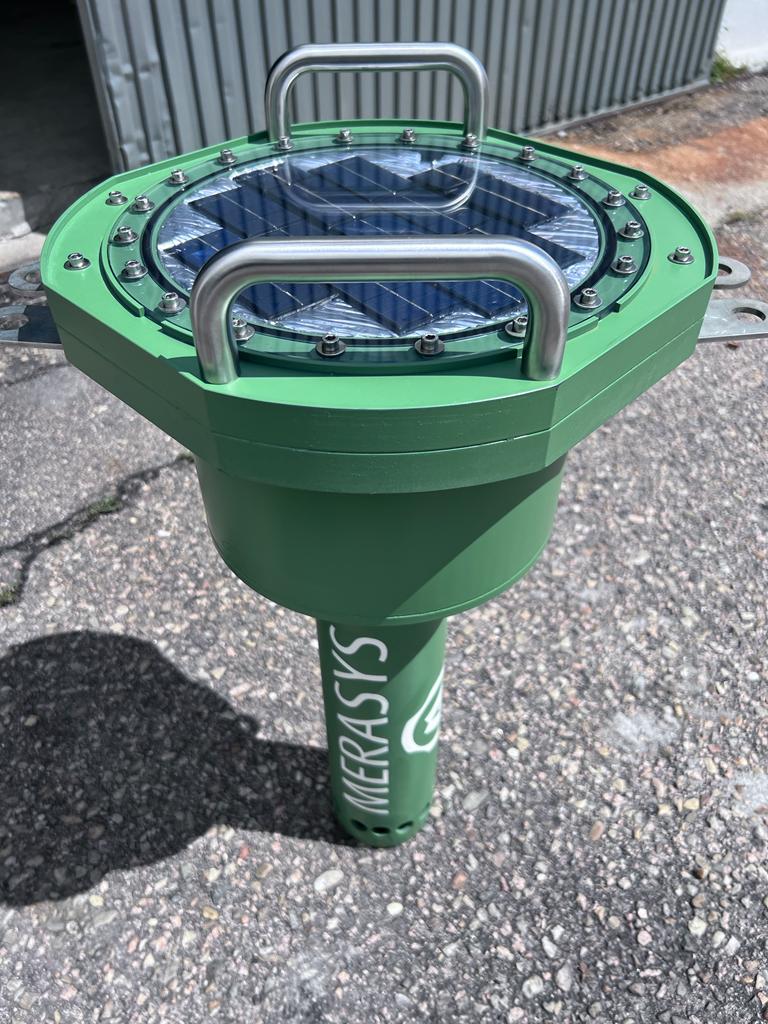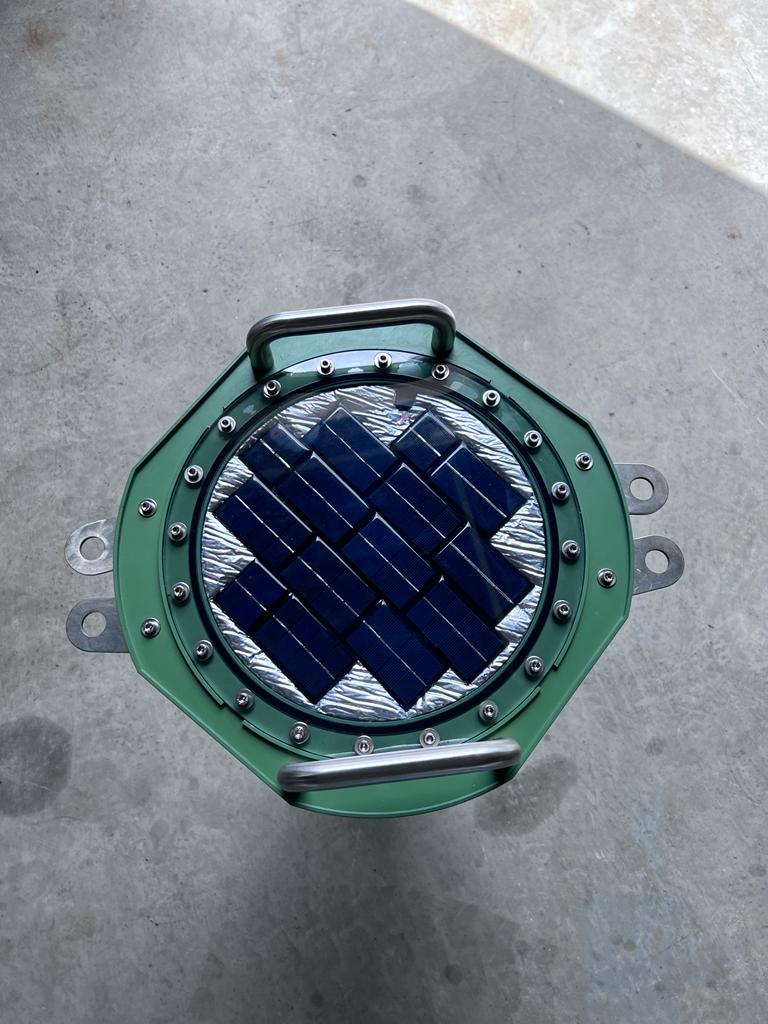The SAWID, or Stand Alone Water Inspection Device, is a portable and self-contained device designed to monitor and analyse water quality in various aquatic environments such as rivers, ponds and more. The device is completely stand-alone and does not require any external power or electrical connections once installed. The device is powered by solar panels, which charge the battery and keep it running even in remote or off-grid locations.
The SAWID is equipped with four sensors that measure different water parameters, including ![]() temperature,
temperature, ![]() pH levels,
pH levels, ![]() conductivity and
conductivity and ![]() dissolved oxygen. These sensors provide accurate data in real-time, which is transmitted wirelessly via GPRS to a cloud-based platform for further analysis. The data is updated regularly and can be presented in various formats, making it easy for users to interpret the data and make informed decisions regarding water quality management.
dissolved oxygen. These sensors provide accurate data in real-time, which is transmitted wirelessly via GPRS to a cloud-based platform for further analysis. The data is updated regularly and can be presented in various formats, making it easy for users to interpret the data and make informed decisions regarding water quality management.
The SAWID, or Stand Alone Water Inspection Device, is a portable and self-contained device designed to monitor and analyse water quality in various aquatic environments such as rivers, ponds and more. The device is completely stand-alone and does not require any external power or electrical connections once installed. The device is powered by solar panels, which charge the battery and keep it running even in remote or off-grid locations.
The SAWID is equipped with four sensors that measure different water parameters, including ![]() temperature,
temperature, ![]() pH levels,
pH levels, ![]() conductivity and
conductivity and ![]() dissolved oxygen. These sensors provide accurate data in real-time, which is transmitted wirelessly via GPRS to a cloud-based platform for further analysis. The data is updated regularly and can be presented in various formats, making it easy for users to interpret the data and make informed decisions regarding water quality management.
dissolved oxygen. These sensors provide accurate data in real-time, which is transmitted wirelessly via GPRS to a cloud-based platform for further analysis. The data is updated regularly and can be presented in various formats, making it easy for users to interpret the data and make informed decisions regarding water quality management.


The SAWID uses advanced technologies such as IoT (Internet of Things), cloud computing, and RTRM (Real-Time Remote Monitoring) to enable the continuous monitoring of the condition of various water bodies. They allow for data to be collected and analysed quickly and efficiently, providing accurate information.
The use of cloud-based platforms enables multiple users to access and collaborate on the data, facilitating better communication and coordination among various agencies and organisations involved in water quality monitoring.
Overall, the SAWID provides a convenient and efficient way to collect, analyse and share data on water quality conditions. This helps promote transparency, accountability and effective management of our valuable water resources.

TEMPERATURE - The temperature of water affects what kind of organisms can live there, meaning if the temperature gets too high or too low, the number of organisms will decrease. The temperature of water also affects other factors, including conductivity and dissolved oxygen levels.
DISSOLVED OXYGEN - Aquatic species need dissolved oxygen to survive. If levels are too low, it puts these organisms at risk. High temperature levels tend to result in low dissolved oxygen levels, which is why it is important to measure multiple parameters.
CONDUCTIVITY - If there are significant changes in the level of conductivity, it normally indicates that some disturbance or pollutant has entered a water body and altered its normal condition.
pH LEVELS - The pH levels of water can demonstrate the level of pollution, which in turn will affect animals and plants. For humans, pH can change how our water tastes, affect our appliances and can damage different materials that we use.



